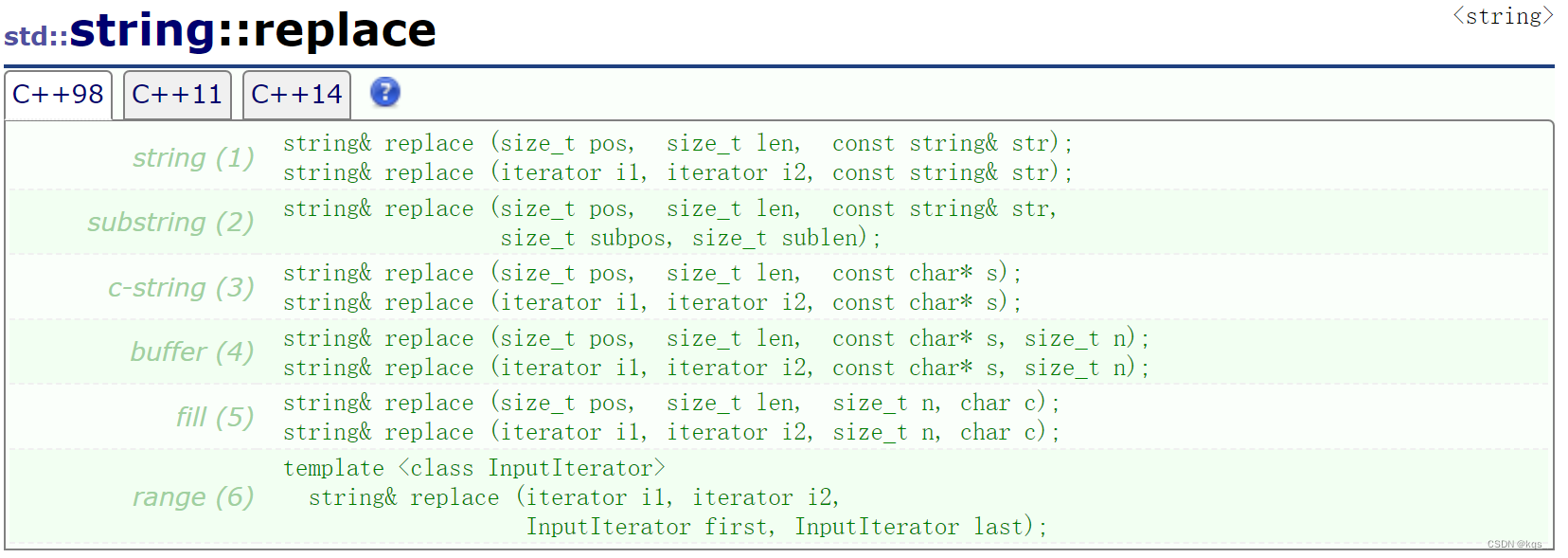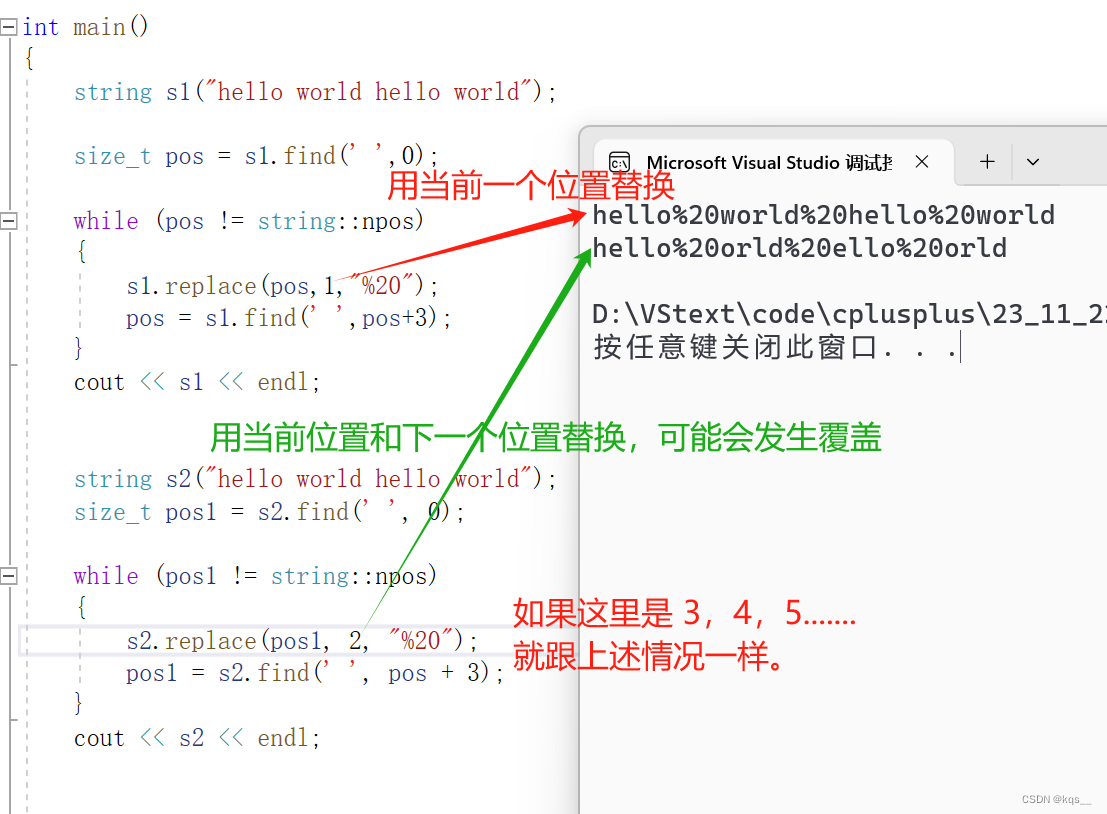insert:

erase:
 常见用法:
常见用法:
int main()
{string s1("hello world");string s2("gm");s1.insert(5,"x");cout << s1 << endl;s1.insert(6,s1,0);cout << s1 << endl;s1.insert(0,"x"); // cout << s1 << endl;s1.insert(0,1, 'x');cout << s1 << endl;s1.erase(5,4);cout << s1 << endl;s1.erase(5);cout << s1 << endl;return 0;
}find :

rfind:

replace:



配合使用:

int main()
{string s1("hello world hello world");size_t pos = s1.find(' ',0);while (pos != string::npos){s1.replace(pos,1,"%20");pos = s1.find(' ',pos+3);}cout << s1 << endl;string s2("hello world hello world");size_t pos1 = s2.find(' ', 0);while (pos1 != string::npos){s2.replace(pos1, 2, "%20");pos1 = s2.find(' ', pos + 3);}cout << s2 << endl;return 0;
}c_str:


C++中打开文件:

int main()
{string filename("test.cpp");FILE* fout = fopen(filename.c_str(), "r");char ch = fgetc(fout);while (ch != EOF){cout << ch;ch = fgetc(fout);}cout << endl;return 0;
}substr:

找到一个子字符串返回。


)












![NetCDF开发( C++) [Window32位+ VS2013]](http://pic.xiahunao.cn/NetCDF开发( C++) [Window32位+ VS2013])




